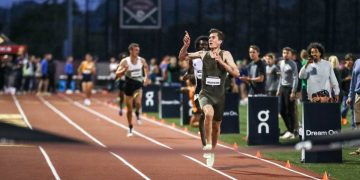This is part 2 of 4 on Coach Andy Young. Andy Young coaches many athletes, among them are Laura Muir, Jemma Reekie and Gabriellea DeBues Stafford.
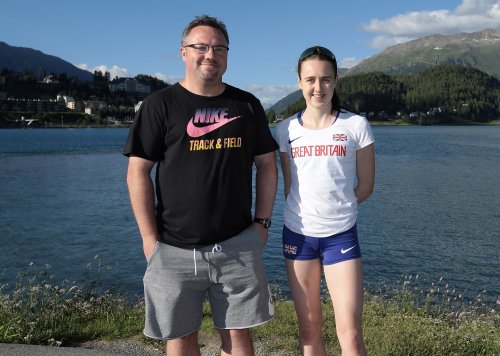 Andy Young and Laura Muir, photo by British Athletics
Andy Young and Laura Muir, photo by British Athletics
RelatedPosts
Andy Young is an excellent coach. He loves what he does and he is quite good at it. I have enjoyed my conversations with Andy and I have observed Andy Young with his athletes. He gives them confidence.
Stuart Weir did this interview, and he is enjoying a weeks vacation. Enjoy this column.
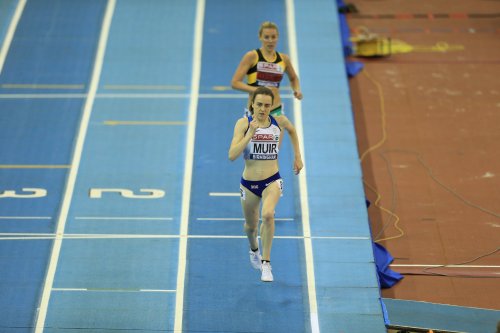 Laura Muir, photo by British Athletics
Laura Muir, photo by British Athletics
Over the years you have coached athletes in different events at different levels – how does that work?
If you go back to about 2010, I would be running around with a sprints group, then when they were having a break, I would be rushing over to the distance group, then back to the sprints group and maybe with the 400 group as well. At the University of Glasgow, I might have been trying to coach three groups of different distances at the same time. As it was usually indoor in the Kelvin Hall, it was possible to shout or get from one to the other. But even when I started working more with elite, I still included those who’d been working with us beforehand. I didn’t suddenly move out all the 400m runners. Now the group would be pretty much all of a high quality. Now it tends to be just middle-distance runners and we try to match them up into various pairings. Some of them who are not at the elite level are just trying to get faster and as long as they are happy achieving their goals, that’s good.
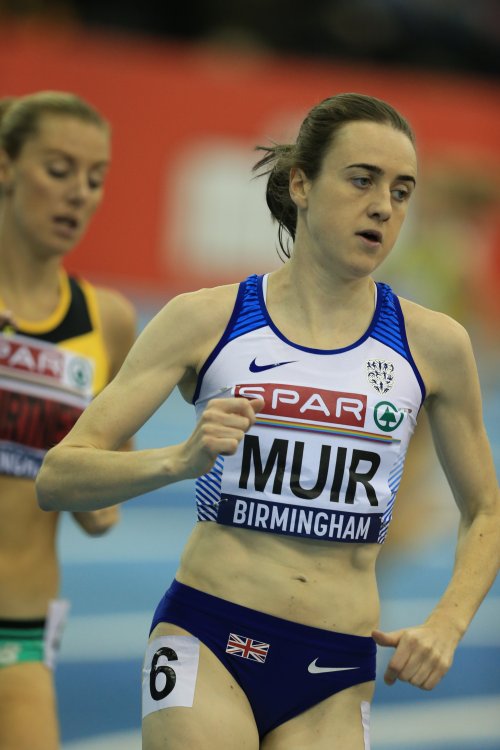 Laura Muir, photo by British Athletics
Laura Muir, photo by British Athletics
How do you balance speed, gym, mileage for an elite athlete?
I have a pretty set routine that I have developed. It’s a weekly routine that we have done for a number of years now and that involves speed, gym, strength, mileage etc. And certainly, Laura likes the familiarity of that routine within the schedule. Like it’s Monday so we do this, Tuesday we do that etc. While we have a set schedule, I do tinker with the workouts or the sessions and blocks within the schedule. I might put hill running in or add a different element of work-out rather than changing the weekly plan. Our race week schedule is pretty similar – I know some people change it. Laura likes to know what’s coming. Obviously when we are preparing for races, there are changes but most of the year it stays the same. Mileage probably doesn’t massively change throughout the year. It doesn’t spike massively in winter and it doesn’t drop drastically in summer – apart from race weeks. We tend to work on the principle of quality rather than quantity.
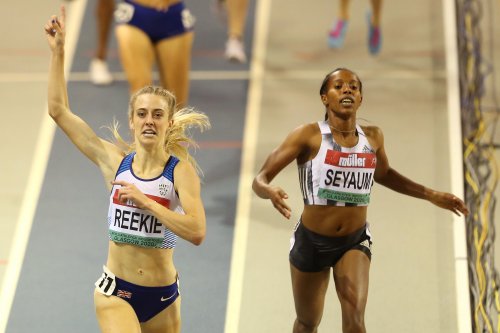 Jemma Reekie, photo by British Athletics
Jemma Reekie, photo by British Athletics
Mileage?
If you include warm-up and cool-down runs as well as the actual runs, probably 50-60 miles per week. It’s gone up a little over the years but is now a fairly stable but we’re not hitting 80, 90, 100. We concentrate more on the intensity and quality. And they always get a rest day every week. I think I would face a rebellion if I took away the rest day! Jemma always does a wee countdown – x days to rest day, which isn’t great if she starts on a Saturday and rest day is not until Friday! But at the end of Thursday, Jemma declares that rest day is starting. I’ve kind of watched, monitored and adjusted mileage. But is not really necessary to increase it as Laura could go out now and run a good 10K or half marathon, just from her current training without bumping up the mileage. We don’t have massive mileage but equally we don’t have peaks and troughs; we just keep it pretty consistent. It’s more the sessions or strength and conditioning that I play around with. It doesn’t change massively but I’m always playing around with it – for example where to put the hill running, where to put more grass workouts but it tends to stay what they are familiar with.
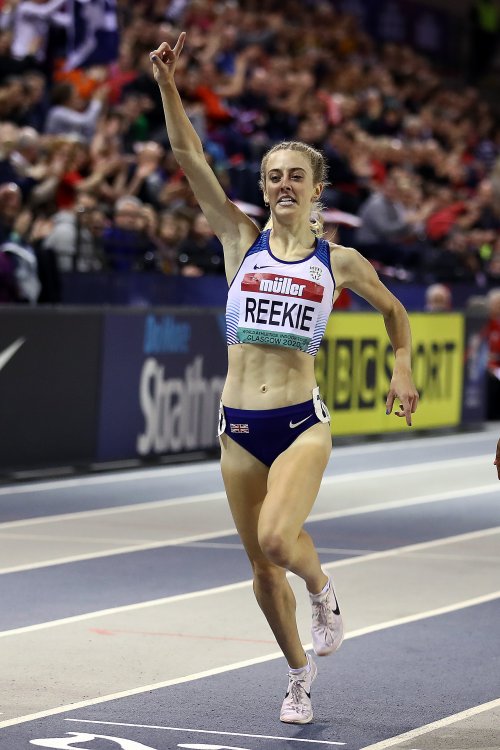 Jemma Reekie, photo by British Athletics
Jemma Reekie, photo by British Athletics
How much of an athlete’s success is down to talent as opposed to coaching?
There’s no magic number. Laura has been a runner since she was 8/9/10 years old. She trained quite seriously for a number of years before she got to university. Then we changed some of her training and developed it further. Then she went very quickly from being a nobody – in international terms – to somebody. Within 2.5 years she was winning international Grand Prix and breaking British indoor records. But it wasn’t that she had suddenly taken up running. We just changed the approach and found training that worked for her and coaching that worked for her.
There are some athletes who were probably more talented [than Laura] when they arrived and I’ve seen some huge improvements. Coaches can play a massive role but as well as that you need the effort from the athlete. There are three elements to becoming a successful elite athlete – talent, good coaching and effort from the athlete. And when you put the three together, that’s when you can have real success. You sometimes wonder how many more “Lauras” are out there. Jemma was more successful from 17 and she continued to win titles and now becoming the fastest in the world, breaking Laura’s and Kelly Holmes’ records. Then you have Gabriela [DeBues-Stafford] breaking about 10 national records in a matter of months.
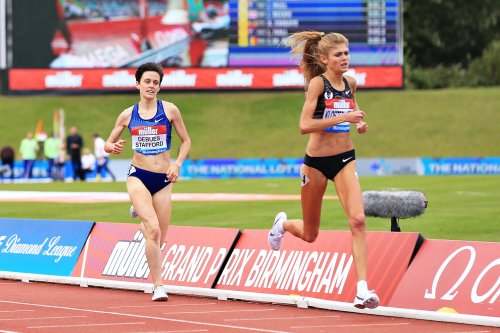 Gabriela DeBues-Stafford, photo by British Athletics
Gabriela DeBues-Stafford, photo by British Athletics
Coaching does play a key role but you need the input from the athlete. I don’t think the amount of talent needed has ever been 100% quantified. You wouldn’t necessarily have looked at Laura and said “super talent” but when you put the three elements together, she became among the best in the world.
If you’re working with a class of 30 children, you can help them all improve but you can’t turn them all into Olympians. But you wonder how many of those 30 could become international athletes if they put in the effort. You can certainly ask who else is out there who hasn’t been discovered.
Author

Since 2015, Stuart Weir has written for RunBlogRun. He attends about 20 events a year including all most global championships and Diamond Leagues. He enjoys finding the quirky and obscure story.
View all posts





